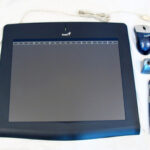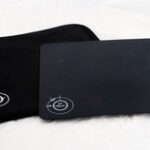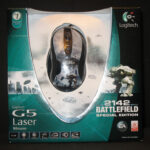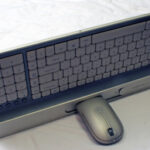Graphics tablets are most popular among designers, and those working in creative fields: digital painters, engineers, web designers, photographers. A graphics tablet frees it’s user from the mouse, which feels unnatural when compared to real media. The ability to design with ease improves accuracy, and allows the user to work more efficiently.
These days, you may notice that designers aren’t the only ones raving about graphics tablets. The general computer user can use a tablet to write digital notes, create digital signatures, navigate through applications, give professional presentations, and surf the web – everything that you would normally do with a mouse.
Both designers, and non-designers alike are picking up a pen stylus to prevent and reverse the effects of repetitive stress injuries (RSI). The pain caused by carpal tunnel syndrome, tendinitis, and even rheumatoid arthritis can be greatly reduced by switching to a graphics tablet. In some cases, the use of a tablet will allow a person to keep a job that they would otherwise be unable to do.
If you’be been doing some research, you know the benefits of using a digital tablet, and perhaps you’ve made the decision to buy one. How do you go about choosing the right tablet? What features will work best for you? Let’s take a closer look:
Compatibility
If your computer is a newer model, chances are, it has a USB (Universal Serial Bus) port. Most of today’s graphics tablets use USB to connect. It’s much faster than an older serial connection, and easier to use. Once you connect a USB tablet to your computer, it automatically recognizes the connection, and installs the needed drivers. All you’ll have to install is your tablet’s software.
If you are using an older computer with a serial port, serial tablets are still available. Wacom continues to produce Intuos serial tablets.
What you get
You will find that most graphics tablets come bundled with a pen stylus, a mouse, and graphics software applications. For example, the Aiptek HyperPen 12000U package includes ULead Photo Impact 5, and Art Dabbler, among other applications. Wacom’s Graphire3 comes with Adobe Photoshop Elements 2 and Corel Painter Essentials 2. Versatile software combinations like these allow users to do more with their tablets.
Companies like Wacom, Aiptek, and NISIS, know that users still find mice useful, and have integrated this into their products. A graphics tablet’s mouse is usually wireless, and used exclusively on the surface of the tablet. However, you don’t have to stop using your current mouse, nor do you have to spend time changing settings to switch between the two. Use your current mouse, even with your tablet’s mouse resting on it’s surface.
Some tablet models require batteries for the mouse and stylus, like the NISIS G5 which uses AAA batteries. This helps to keep the cost of graphics tablets down, making them more affordable. NISIS starts you off with batteries included, but the buyer will have to weigh the cost between paying less for a tablet, and buying new batteries over time, or using rechargeable batteries. This is definitely something to consider if you use your tablet every day.
Size
Standard graphics tablet sizes are 4 x 5, 6 x 8, and 9 x 12. There are also larger sizes available. Keep in mind that it can be easy to confuse the physical size of the tablet with it’s actual work space, especially when buying from online stores, where you don’t have the physical product in front of you.
So, which tablet size is the best? That depends on what you plan to do with your tablet, and how you prefer to work. My Wacom Graphire3 measures 10 x 11, with a work space of 6 x 8. Most of all, I use it to create digital paintings, and I find this size works best for me. Overall, the most popular tablet size is 6 x 8. On the other hand, I know artists who would prefer a 9 x 12, because it more accurately mimics the range of motion used in real media, however, artists often go with smaller, cheaper models.
There is also the issue or tablet resolution, which is measured by lpi (lines per inch). You’ll find tablets with around 2,000 to 5,000 lpi. A higher resolution is useful for more detailed work.
Pressure sensitivity effects the level of control that you have while your tablet translates what you do with your stylus onto the screen. The harder you press down on the tablet, the darker and larger your line will be. You will get more gradation control with a 1,000 level tablet, than you would with a 500 level, for example.
In most cases, tablets with higher lpi’s and levels of sensitivity, are more expensive.
Getting used to your tablet
The time that it takes to adjust to a graphics tablet depends on the the individual. It took me a couple days to get used to my tablet. For others, it may take longer. It’s a bit odd looking at a monitor instead of your hands. It also takes a while to get used to hovering the stylus over the surface of the tablet without touching it. The more you use your tablet, the easier it will get.




